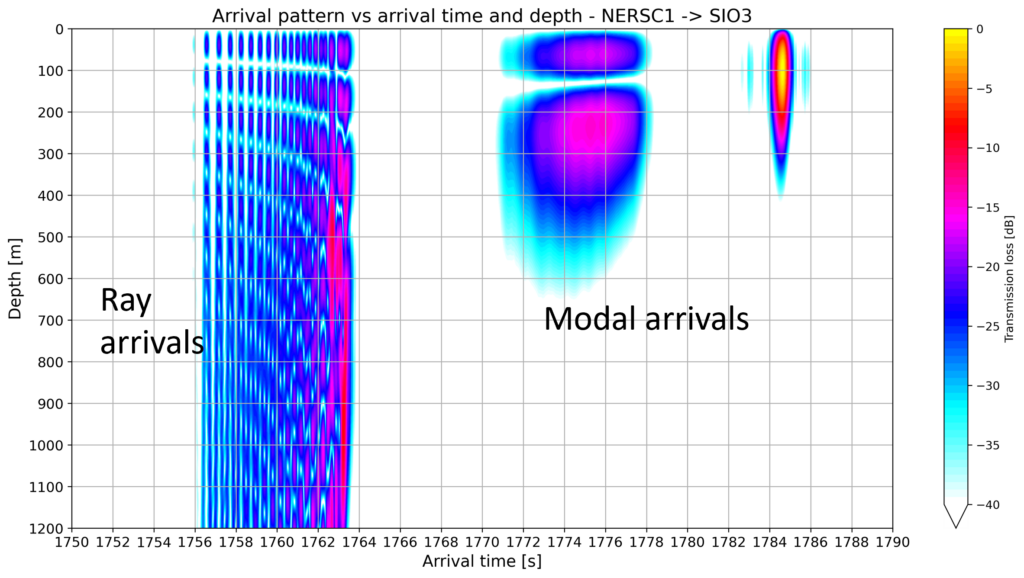Numerical ocean models are commonly evaluated using oceanographic measurements such as ship-borne temperature and salinity measurements, or similar measurements of water properties from moored instruments. But also acoustic measurements, such as long-distance acoustic travel times from acoustic tomography experiments can be used to evaluate ocean models, as the measured acoustic travel times are related to ocean temperatures and ocean stratification.
HiAOOS wants to develop methods for such model evaluations tailored for the specific conditions in the Arctic Oceans. The observed acoustic arrivals from trans-basin acoustic tomography experiments show a combination of sharper ray arrivals and modal arrivals, which are more spread out in time. The figure shows (modelled) arrival time distribution for different depths and illustrates the difference between the two types of arrivals.
Methods and tools will be developed to compare results from observations and simulations to quantify differences between the observed and the simulated arrival structure. Simply put, this task wants to find the most useful way to judge how similar a modelled and an observed arrival are, and how to measure how different they are.
Such a measure of difference can be used to set up a cost function that will be used to evaluate reanalysis products as well as provide a forerunner to establish a measurement matrix for assimilation or model-oriented inversions.
